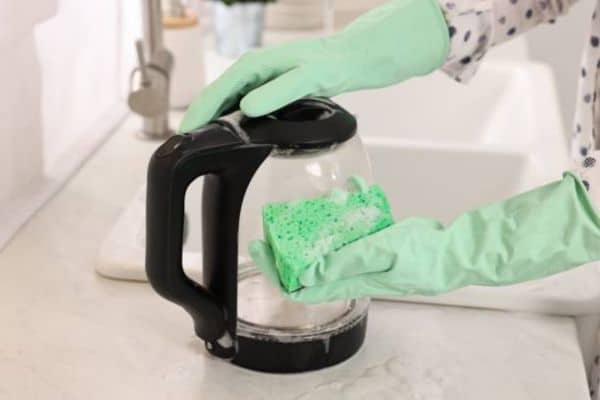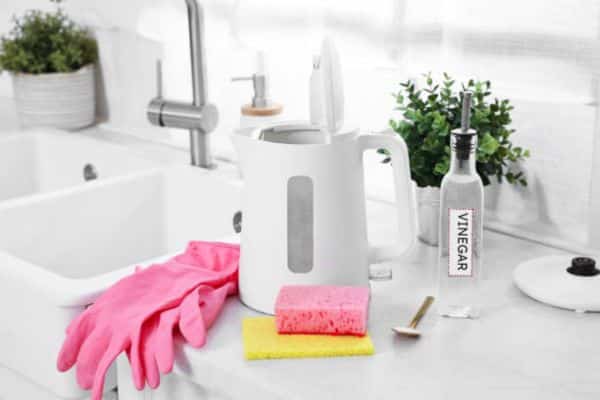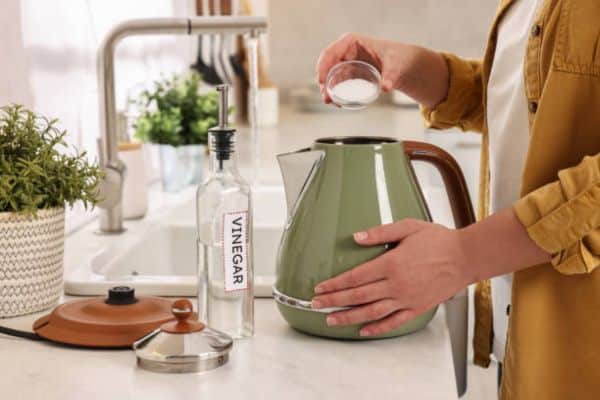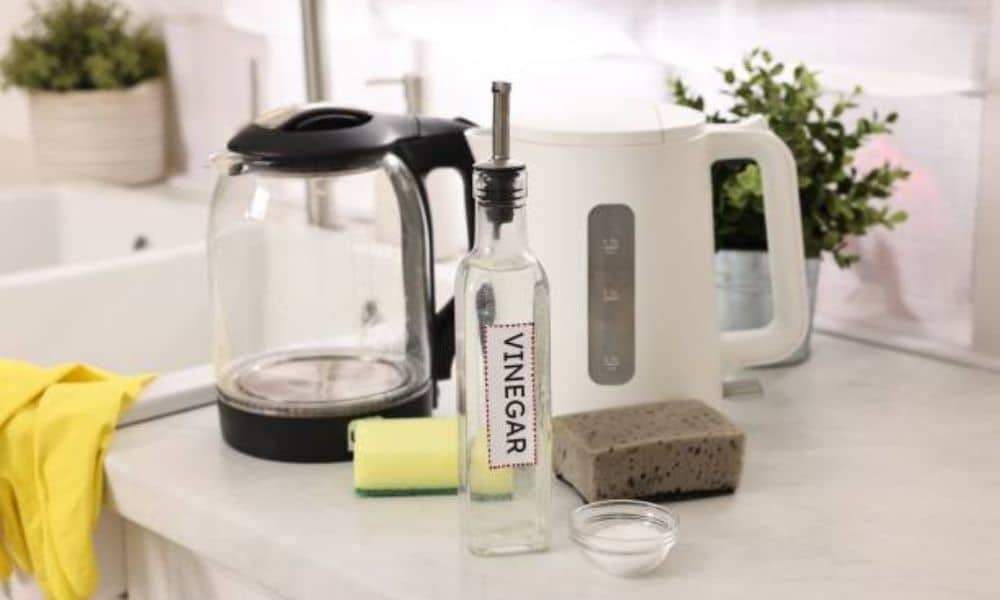I still remember the day my tea tasted strange. Not bad—just dull and kind of chalky. I looked inside my kettle and saw a white layer stuck to the bottom. That was limescale. It hit me—I had never cleaned it! I searched for a simple fix and found the best one yet. Here’s how to clean kettle with vinegar and baking soda without stress. It’s cheap, safe, and works like magic. I’ve used this trick for years, and it keeps my kettle fresh. Let me show you how to do it right, even if you’ve never tried before.
Why Your Kettle Needs Cleaning (And More Often Than You Think)
A clean kettle makes better tea and lasts longer. That white, chalky layer inside? That’s limescale. It comes from minerals in tap water. In hard water areas, it builds up fast.
Limescale slows boiling and changes the taste. You may notice your kettle takes longer to heat, and your tea might taste flat or bitter. That’s limescale working against you.
The more you use your kettle, the more it builds up. Hard water speeds up the process. Cleaning often keeps it working well and keeps your drinks fresh.
Cleaning helps your kettle stay safe and strong. It protects the heating part, saves energy, and stops damage. A clean kettle works faster and lasts longer.
What You’ll Need Before You Start
You don’t need much to clean your kettle—just a few simple tools. Most of these are already in your kitchen. This method is safe, natural, and takes only a few minutes to set up.
Here’s what you’ll need:
- 1 cup of white vinegar
- 2 tablespoons of baking soda
- Clean water
- A soft sponge or bottle brush
- A dry cloth or towel
Optional but helpful: A slice of lemon for a fresh smell after cleaning.
Vinegar and baking soda work together to remove limescale without harsh chemicals. They clean deep and leave your kettle looking like new. A soft sponge helps lift the scale without scratching. For best results, try this method on the Best Non Toxic Electric Tea Kettle for a sparkling clean without compromising your health.
Step-by-Step Guide
Cleaning is easier than you think. You only need a few basic things. This method is safe, fast, and works every time.
01. Pour vinegar into the kettle

Use one cup of white vinegar. Then add clean water until the pot is half full.
02. Bring the mix to a boil
Turn off the kettle. Let it rest for 15 to 20 minutes.
03. Add baking soda
Use two tablespoons. It will fizz and break down limescale.
04. Scrub the inside gently

Use a soft sponge or brush. Avoid scratching the surface.
05. Empty and rinse well
Pour out the mix. Rinse two or three times with water.
06. Wipe dry with a clean cloth
Make sure the inside is clean and fresh.
Bonus Tips From My Personal Experience

Let your kettle soak longer for a deeper clean. I’ve found that giving the vinegar up To 30 minutes helps loosen tough limescale. The longer it sits, The easier it scrubs away.
Boil plain water once after cleaning. This helps remove any leftover vinegar smell. It also gives A fresh reset before the next use.
Use filtered water To prevent buildup. Since I switched to filtered water, My kettle stays clean much longer. It cuts down On mineral deposits And makes future cleaning easier.
These small steps make A big difference. A few extra minutes now can save your pot later.
Mistakes To Avoid When Cleaning

Avoid using harsh scrubbers on the inside. Steel wool or hard brushes can scratch the surface. Scratches may lead to rust or damage over time.
Never submerge the electric base. Water and wires don’t mix. Always keep the plug and bottom part dry to stay safe.
Stay away from scented vinegar or detergents. These can leave behind smells or flavors. Stick to plain white.
Cleaning your pot the wrong way can cause more harm than good. A gentle touch Is all it takes To get great results.
How Often Should You Clean Your Kettle?
A good rule is To clean your kettle every 2 to 4 weeks. This keeps it free from limescale And running smoothly. Regular cleaning also helps your drinks taste fresh.
Some pot need more care than others. If you use it often or have hard water, Clean it every two weeks. Less use of soft water? Once a month may be fine.
A simple routine goes A long way. The more often you clean, The less buildup you’ll find. It also makes the job quicker each time.
Frequently Asked Questions
Can I use apple cider vinegar instead of white vinegar?
Yes, but white vinegar works better. Apple cider vinegar has a stronger odour And may leave A light tint. Stick with plain vinegar For the best clean.
What can I use if I don’t have baking soda?
You can clean the kettle with vinegar alone. It still removes most buildup. Lemon juice can also help, Though not as strongly as soda.
Is vinegar safe for all types of kettles?
Yes, Vinegar is safe for most kettles—electric, glass, And stainless steel. Just avoid soaking Or scrubbing delicate parts. Always check your manual To be sure.
Final Thoughts
Now you know how to clean the easy way. It’s quick, Simple, And works like A charm. Just a few steps can bring back the shine And improve the taste of your drinks.
Taking care Of your kettle is worth it. Clean it often, And it will last longer And work better. Your tea, coffee, And hot water will taste fresher every time.

